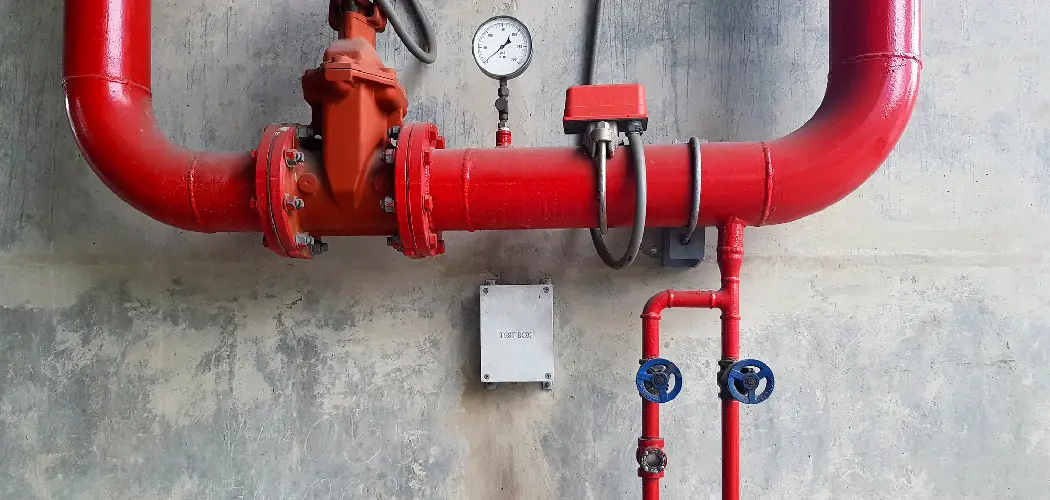Fire sprinkler systems are essential for any building, as they help to prevent and control fires. However, just having a fire sprinkler system installed is not enough – it needs to be regularly tested and maintained to ensure that it functions properly in case of an emergency. In this guide, we will discuss how to test fire sprinkler system to ensure its effectiveness.
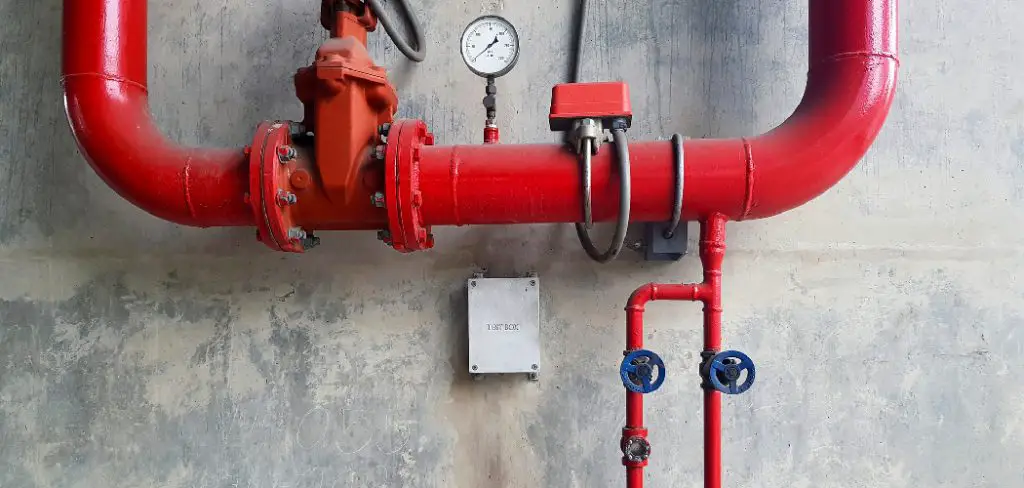
Necessary Items
Before you begin testing your fire sprinkler system, make sure you have the following items on hand:
- A ladder or access platform to reach the sprinkler heads
- Protective gear, such as gloves and safety goggles
- A bucket or container to catch any water that may be released during testing
- A tape measure to measure water flow rates
- A stopwatch or timer
- A phone or walkie-talkie to communicate with other members of your testing team
12 Steps on How to Test Fire Sprinkler System
Step 1: Notify the Fire Department
Before testing your fire sprinkler system, it is important to inform the local fire department and any relevant authorities that you will be conducting a test. This will prevent any false alarms or unnecessary responses from emergency services.
Step 2: Notify Building Occupants
It is also important to notify all building occupants about the upcoming fire sprinkler system test. This will prevent any confusion or panic if the alarms go off during testing. Keep in mind that the sound of water rushing through pipes can be startling, so it is important to inform everyone beforehand.
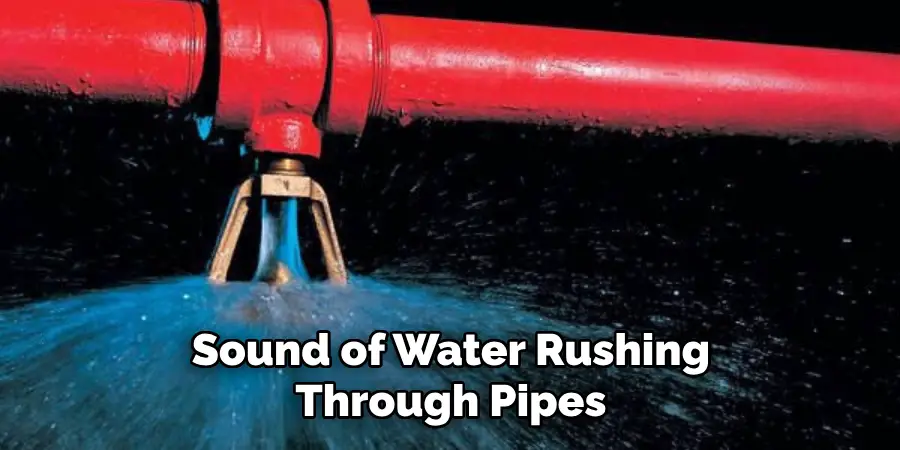
Step 3: Shut Off Water Supply
Before conducting any tests, make sure to shut off the main water supply to your fire sprinkler system. This will prevent any accidental discharge of water during testing. So, ensure that the main valve is closed and that no water is flowing through your system.
Step 4: Check the Pressure Gauges
Most fire sprinkler systems have pressure gauges to indicate whether the system is functioning properly. Before testing, check these gauges to make sure they are within the recommended range. If any of the gauges show a reading outside of the recommended range, you may need to call a professional for further inspection.
Step 5: Inspect the Sprinkler Heads
Visually inspect all sprinkler heads to ensure that they are not damaged or obstructed. Any damaged or blocked sprinkler heads should be replaced immediately. So, check all the sprinkler heads and make sure they are free from any debris or obstructions.
Step 6: Check for Leaks
Inspect all pipes and fittings for any signs of leaks or corrosion. If you notice any leaks, it is important to get them repaired before conducting a test. Leaks can greatly affect the effectiveness of your fire sprinkler system. So, take the time to thoroughly inspect all pipes and fittings.
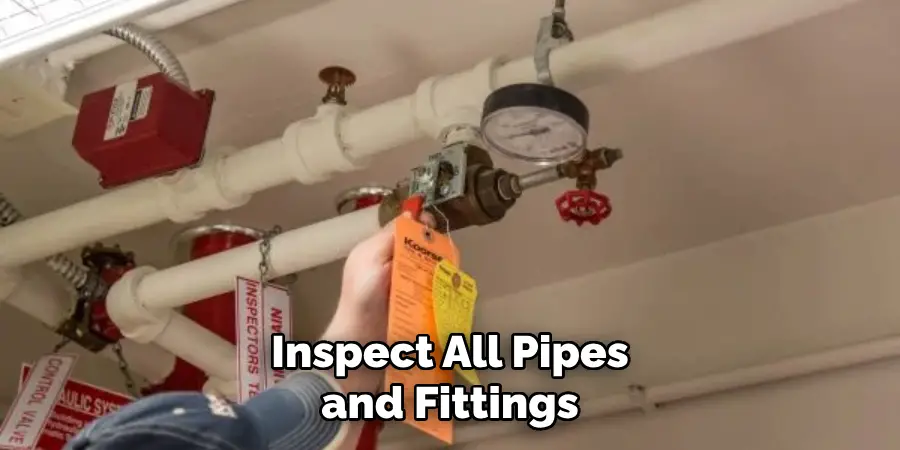
Step 7: Conduct a Flow Test
A flow test involves measuring the water flow rate from your fire sprinkler system. This is an essential part of testing, as it ensures that the system can deliver enough water in case of a fire. To conduct a flow test, attach a bucket or container to one of the sprinkler heads and measure how long it takes to fill up with water.
Step 8: Record Results
Make sure to record the results of your flow test and any other tests you conduct. This information will be useful for future reference and can help identify any changes or issues with your system over time.
Step 9: Reset the System
After completing all necessary tests, reset your fire sprinkler system by turning on the main water supply valve. Make sure to reset any alarms or systems connected to your fire sprinkler system as well.
Step 10: Test Alarms
Once the system is reset, test the alarms to make sure they are functioning properly. If any alarms do not sound, contact a professional for further inspection and repairs. So, make sure to check all alarms and ensure they are working correctly.
Step 11: Inform the Fire Department & Building Occupants
After completing all tests and resetting the system, inform the fire department and building occupants that you have completed testing. This will prevent any false alarms or concerns from emergency services or building occupants.
Step 12: Schedule Regular Maintenance
Regular maintenance and testing of your fire sprinkler system is crucial for its effectiveness. Make sure to schedule routine inspections and tests with a certified professional to ensure that your system is in good working condition.
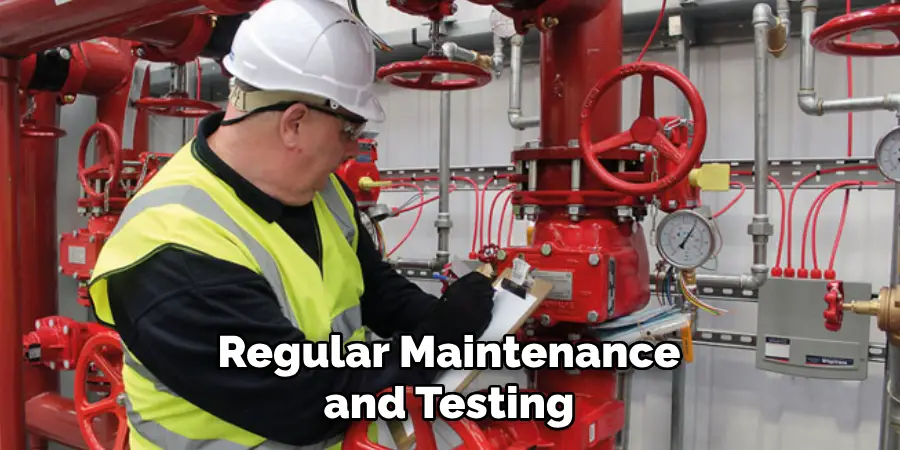
Testing your fire sprinkler system is a necessary step in ensuring its effectiveness and the safety of building occupants. By following these 12 steps, you can conduct a thorough test to identify any issues and make sure that your system is ready to handle a fire emergency. Remember to always prioritize safety and consult a professional if you have any concerns or encounter any problems during testing.
9 Safety Measures to Keep in Mind
While testing your fire sprinkler system, it is important to keep safety as a top priority. Here are 9 safety measures to keep in mind during the testing process:
1) Wear Protective Gear
Make sure to wear protective gear, such as gloves and safety goggles, to protect yourself from potential hazards during testing. So, before starting any tests, ensure that you and your team are properly equipped.
2) Use a Ladder or Access Platform
To reach the sprinkler heads for testing, always use a ladder or access platform. Never stand on chairs or unstable objects to reach high places. While using a ladder, make sure to follow proper ladder safety protocols.
3) Have a Bucket or Container for Water
During testing, water may be released from the system. Make sure to have a bucket or container to catch this water and prevent any mess or damage to the surrounding area. Keep the area around the sprinkler heads clear to avoid any obstructions.
4) Don’t Test Near Electrical Equipment
Avoid testing your fire sprinkler system near electrical equipment or outlets. Water and electricity do not mix, so make sure to keep a safe distance from any electrical sources while conducting tests. So, plan your testing in a safe area away from any potential hazards.
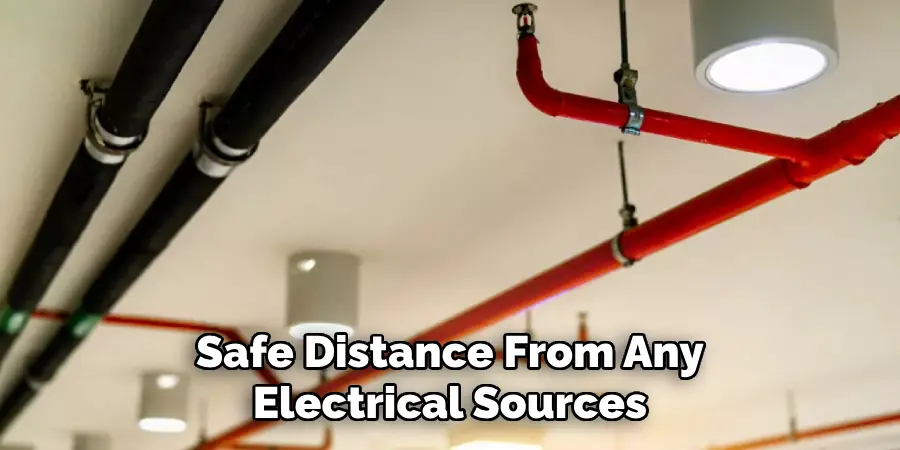
5) Communicate with Building Occupants
As mentioned earlier, it is important to inform building occupants about the upcoming fire sprinkler system test. This will prevent any confusion or panic if alarms go off during testing. So, make sure to communicate clearly and regularly with all occupants.
6) Have a Fire Extinguisher Nearby
As an extra precaution, have a fire extinguisher nearby while conducting tests. In case of any accidental fires, you can quickly put it out before it becomes a bigger problem. However, if a fire does break out, evacuate the building and call for emergency services immediately.
7) Follow Manufacturer Instructions
Make sure to carefully read and follow all instructions provided by the manufacturer when testing your specific fire sprinkler system. This will ensure that you are conducting tests correctly and safely. When in doubt, consult a professional for guidance.
8) Keep Records of Testing
As mentioned earlier, record all testing results and keep them for future reference. This will help track any changes or issues with your system over time. It is also important to keep records for safety compliance purposes.
9) Schedule Regular Maintenance & Inspections
Regular maintenance and inspections are crucial for the effectiveness of your fire sprinkler system. Make sure to schedule these with a certified professional and address any issues or concerns promptly. This will ensure that your system is always ready to handle any potential fires.
By following these safety measures, you can conduct thorough testing while keeping yourself and others safe. Remember, the well-being of all building occupants should be the top priority at all times.
8 Things to Avoid During Testing
While conducting tests on your fire sprinkler system, there are certain things that you should avoid to ensure the safety and effectiveness of the testing process. Here are 8 things to avoid during testing:
1) Tampering with System Components
Do not tamper with any components of your fire sprinkler system while conducting tests. This includes valves, pipes, and sprinkler heads. Tampering can cause damage to the system and compromise its effectiveness.
2) Overloading the System
Avoid overloading the system by testing too many sprinkler heads at once. This can put unnecessary strain on the system and potentially cause damage. Test in smaller groups or zones to ensure that your system is functioning properly without overloading it.
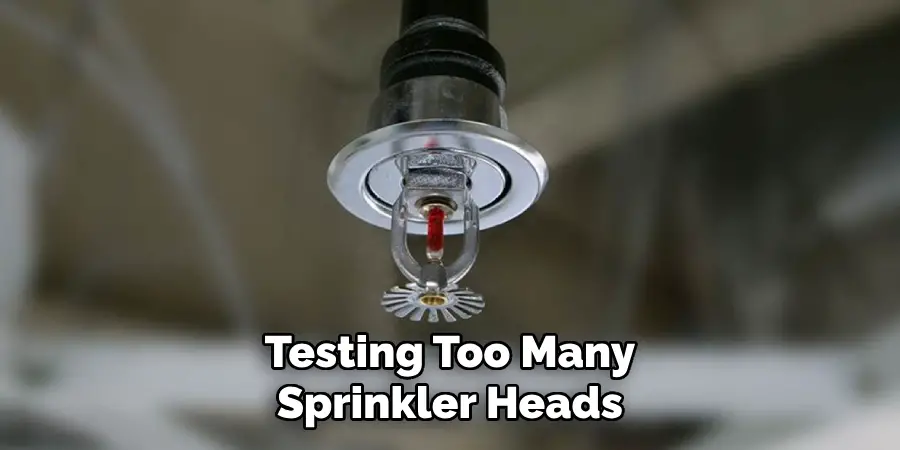
3) Using the Wrong Water Supply
Make sure to use the correct water supply for your system while conducting tests. Using an incorrect water source can cause damage and affect the accuracy of test results. Make sure to consult with a professional if you are unsure about the water supply for your system.
4) Ignoring Warning Signs
If your fire sprinkler system displays any warning signs or malfunctions during testing, do not ignore them. Address these issues promptly and consult with a professional if needed. Testing should only be conducted on a fully functioning system.
5) Not Properly Disposing of Water
After conducting tests, make sure to dispose of any water collected properly. Do not dump it down the drain or into sensitive areas. Improper disposal can cause damage and create a mess. But remember to have a bucket or container handy to catch the water during testing.
6) Skipping Regular Maintenance
Regular maintenance is essential for the functionality and effectiveness of your fire sprinkler system. Skipping or neglecting maintenance can lead to costly repairs and potentially compromise the safety of building occupants. Make sure to schedule regular inspections and address any issues promptly.
7) Not Communicating with Building Occupants
As mentioned earlier, it is important to inform building occupants about testing and any potential disruptions. Failure to communicate can cause confusion and panic, which can be dangerous in an emergency situation. Keep everyone informed and updated throughout the testing process.
8) Not Following Safety Measures
Finally, always make sure to follow all safety measures and protocols while testing your fire sprinkler system. This includes wearing appropriate protective gear, keeping a safe distance from electrical equipment, and having a fire extinguisher nearby. Safety should always be the top priority during testing.
By avoiding these things and following proper testing procedures, you can ensure the safety and effectiveness of your fire sprinkler system. Always consult with a professional if you have any concerns or questions.
Keep yourself and others safe while maintaining a functional fire sprinkler system for your building. Overall, with proper maintenance and regular testing, your fire sprinkler system can provide peace of mind and potentially save lives in case of a fire emergency.
8 Additional Tips for Maintaining a Fire Sprinkler System
Apart from regular testing and maintenance, here are 8 additional tips that can help you maintain a fully functional fire sprinkler system:
1) Keep the Area Around Sprinkler Heads Clear
Make sure to keep the area around sprinkler heads clear of any objects or obstructions. This will ensure that they can effectively dispense water in case of a fire. Do not hang decorations or storage items from sprinkler heads.
2) Monitor Water Pressure
Monitor the water pressure in your system regularly to ensure that it is within the recommended range. Low water pressure can affect the effectiveness of your system during a fire emergency. So, make sure to address any issues promptly.
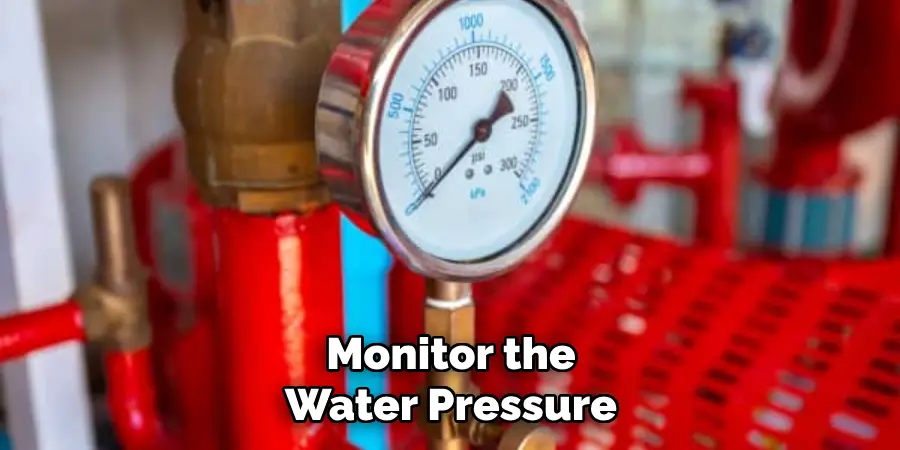
3) Check for Corrosion
Inspect your pipes and sprinkler heads regularly for signs of corrosion. This can affect the functionality of your system and potentially cause leaks. If you notice any corrosion, consult with a professional to address the issue.
4) Test Alarms and Control Valves
In addition to testing the sprinkler heads, make sure to also test the alarms and control valves regularly. These are important components of your system that need to be functioning properly in case of a fire emergency.
5) Replace Old Components
If any components of your fire sprinkler system are old or outdated, make sure to replace them with newer versions. This will ensure that your system is up to date-and functioning at its best.
6) Train Employees
If your building has a designated fire safety team, make sure to train them on how to properly use the fire sprinkler system. This will ensure that they are prepared in case of a fire emergency and can effectively assist others.
7) Keep Records
Keep detailed records of all inspections, maintenance, and testing conducted on your fire sprinkler system. This will help you stay organized and keep track of any potential issues that may arise. As a bonus, it can also be helpful for insurance purposes.
8) Have a Plan in Place
Lastly, make sure to have a plan in place for conducting tests and addressing any issues that may arise during testing. This will help you stay organized and ensure that the testing process goes smoothly each time.
By following these tips on how to test fire sprinkler system and implementing proper maintenance and testing procedures, you can ensure the functionality and effectiveness of your fire sprinkler system. Make sure to stay informed and consult with professionals whenever needed for the safety of yourself and others.
Frequently Asked Questions
How Often Should a Fire Sprinkler System Be Tested?
The National Fire Protection Association (NFPA) recommends testing fire sprinkler systems at least four times a year. This includes quarterly inspections and annual tests.
Who Should Conduct Fire Sprinkler System Testing?
Fire sprinkler system testing should be conducted by a certified professional who has the necessary training and experience. It is not recommended for building owners or occupants to conduct testing on their own.
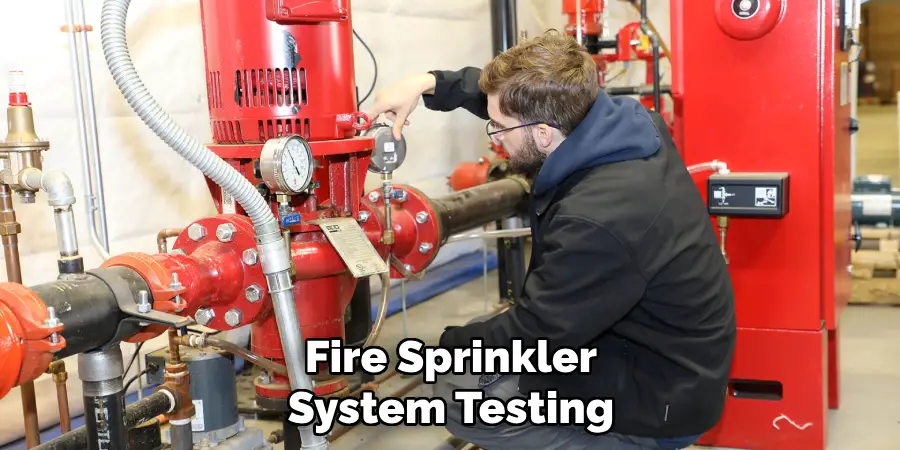
How Much Does Fire Sprinkler System Testing Cost?
The cost of fire sprinkler system testing can vary depending on the size and complexity of the system, as well as the location and any potential repairs that may be needed. It is best to consult with a professional for an accurate estimate.
Can Fire Sprinkler Systems Fail?
Yes, fire sprinkler systems can fail if they are not properly maintained or tested. This is why regular testing and maintenance are crucial for the effectiveness of the system in case of a fire emergency.
Is It Necessary to Test Fire Sprinkler Systems if They Have Never Been Used?
Yes, it is necessary to test fire sprinkler systems even if they have never been used. Just like any other mechanical system, fire sprinklers can deteriorate over time and may not function properly when needed if not regularly tested.
Therefore, testing is crucial in ensuring their functionality and effectiveness in case of a fire emergency. Additionally, local laws and regulations may require regular testing regardless of previous use. It is always best to consult with a professional for specific guidelines and recommendations for your area.
Conclusion
In conclusion, regular testing and maintenance are essential for ensuring the functionality and effectiveness of a fire sprinkler system. By following these tips on how to test fire sprinkler system and implementing proper maintenance and testing procedures, you can ensure the functionality and effectiveness of your fire sprinkler system.
By following proper testing procedures, consulting with professionals, and implementing additional tips for maintenance, you can ensure the safety and peace of mind for yourself and others in case of a fire emergency. Remember, safety always comes first when it comes to fire sprinkler systems.
You Can Check It Out to Test Exit Signs

